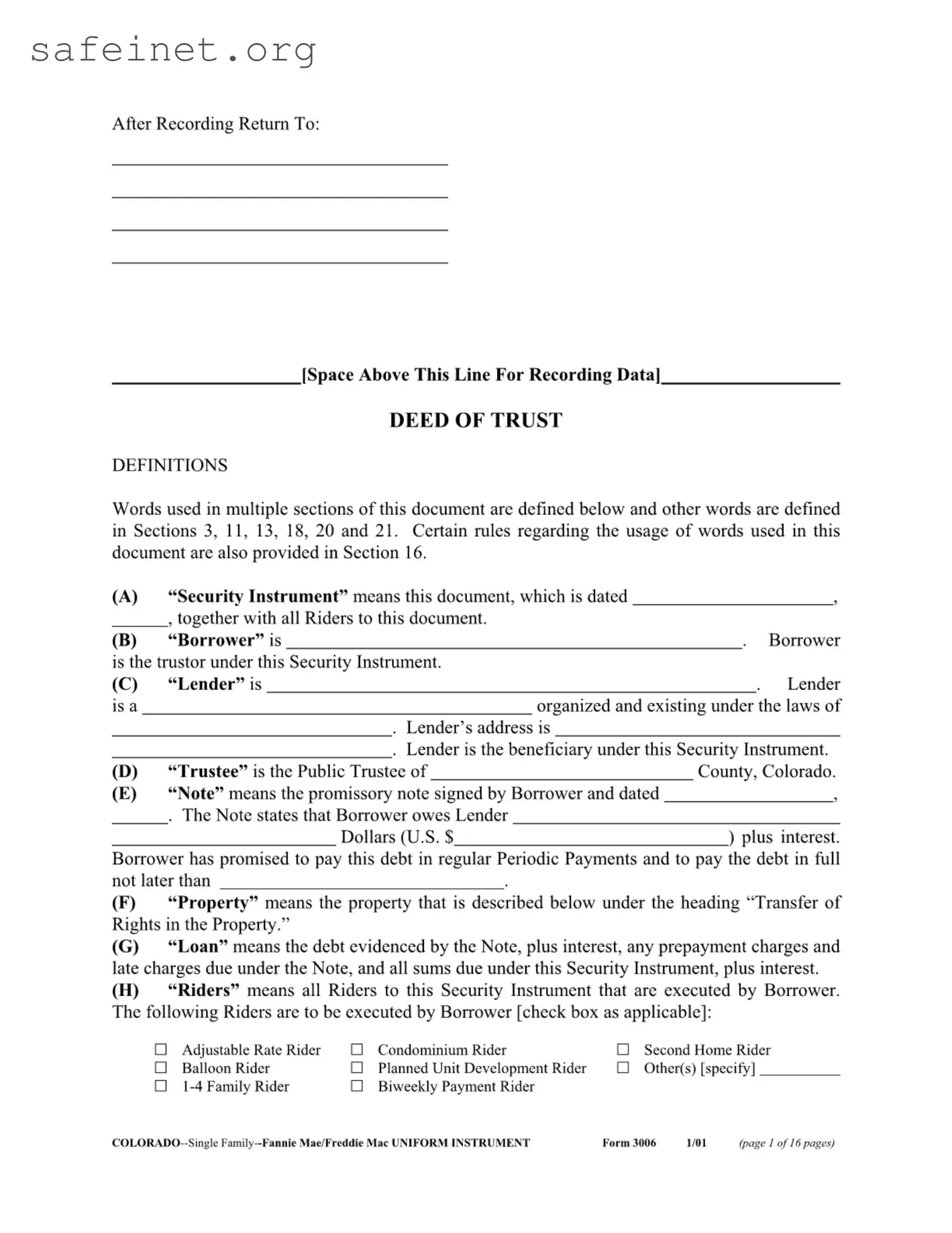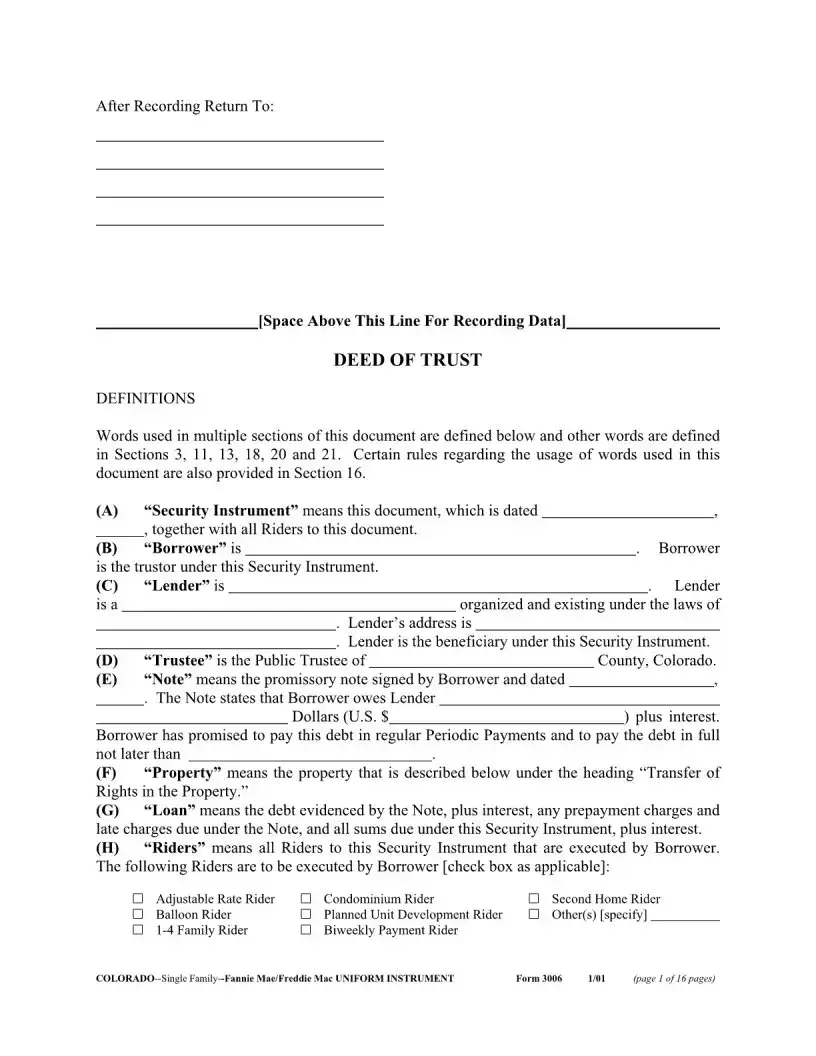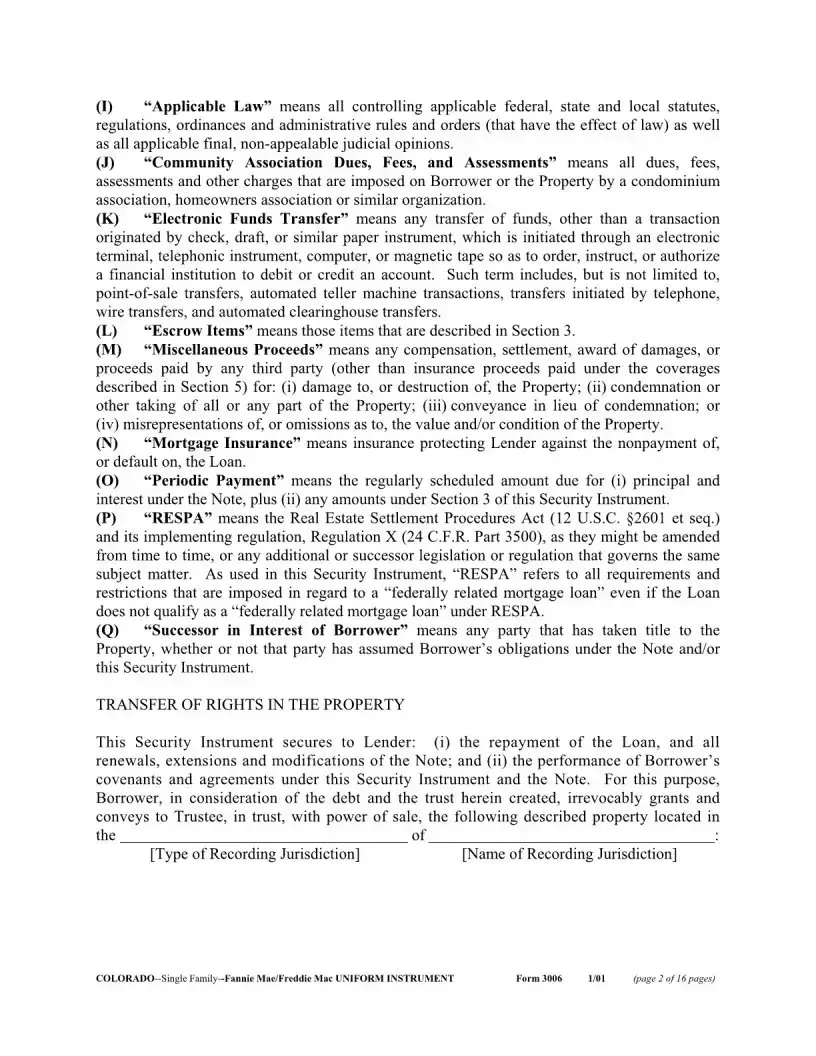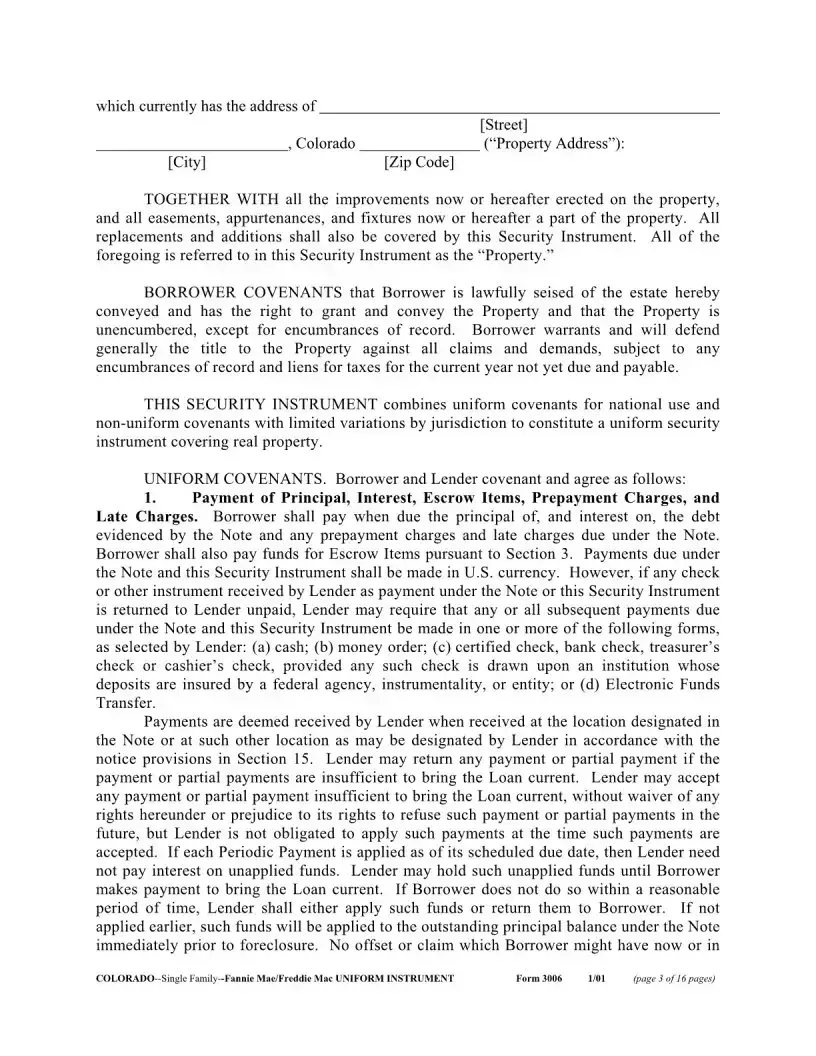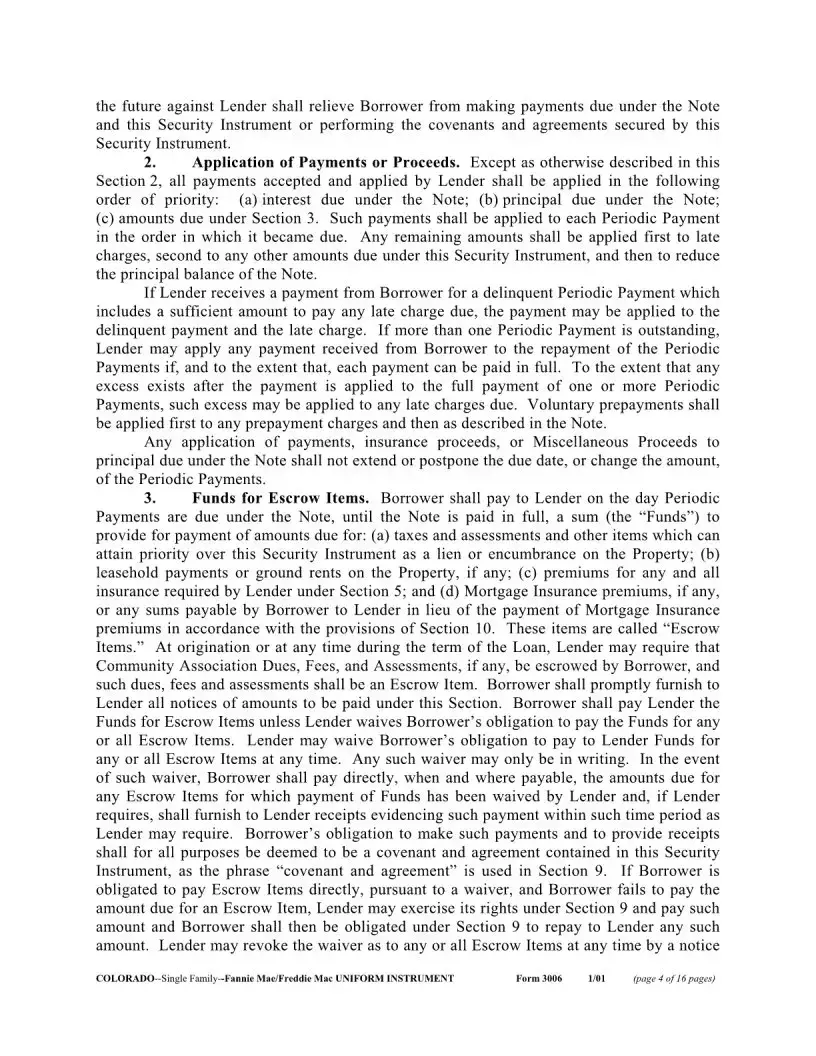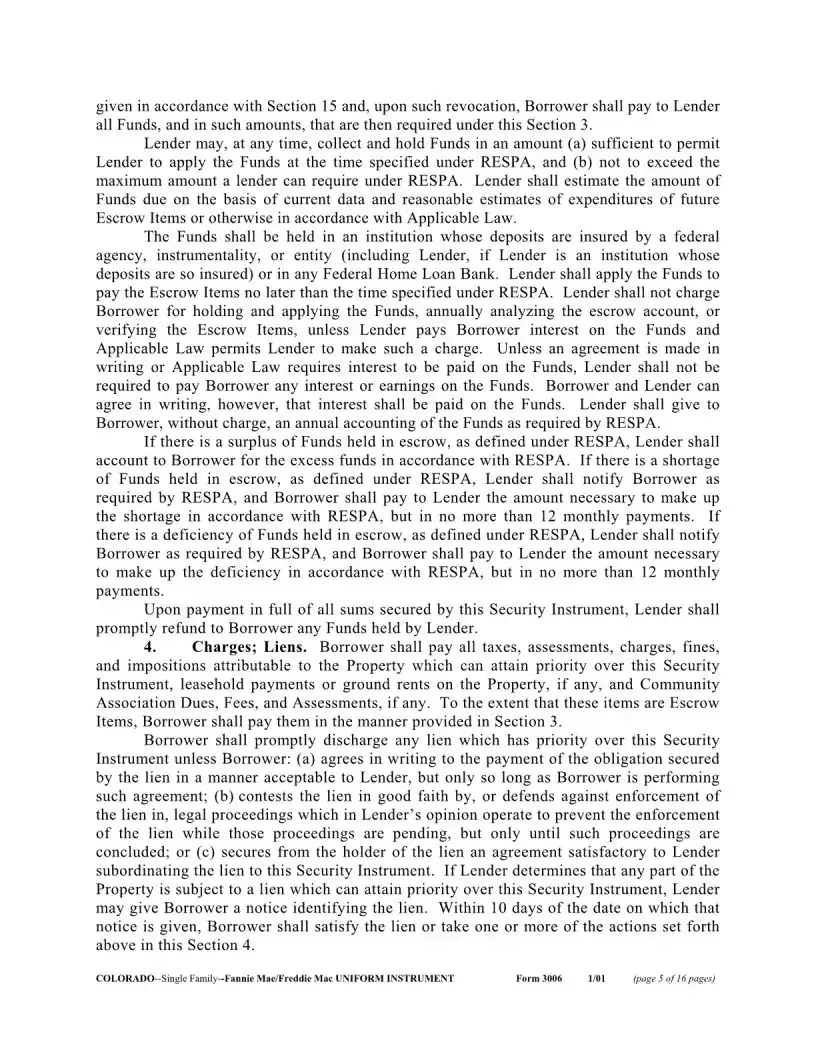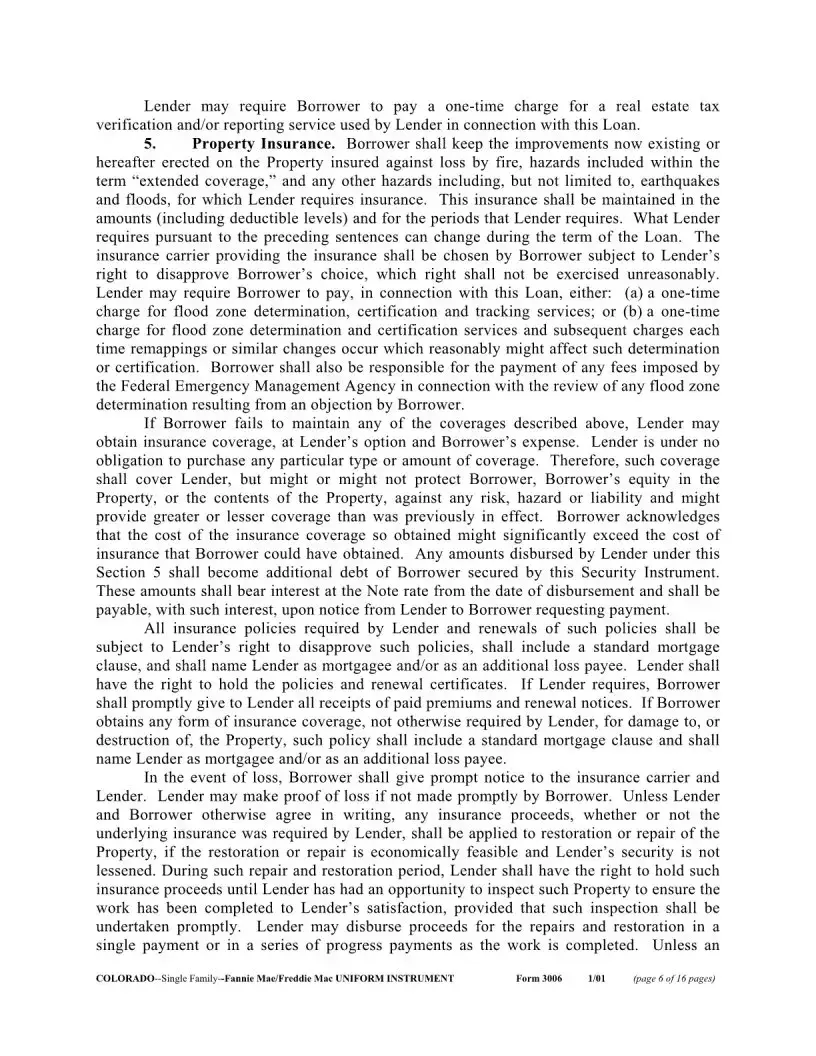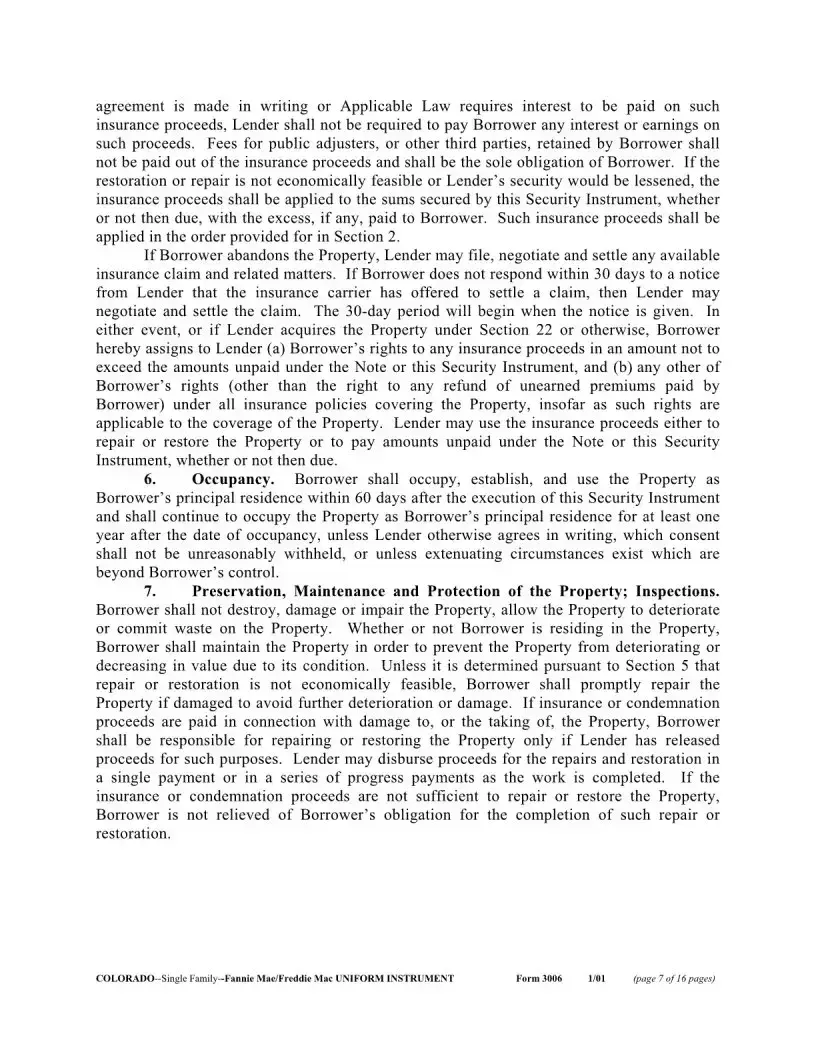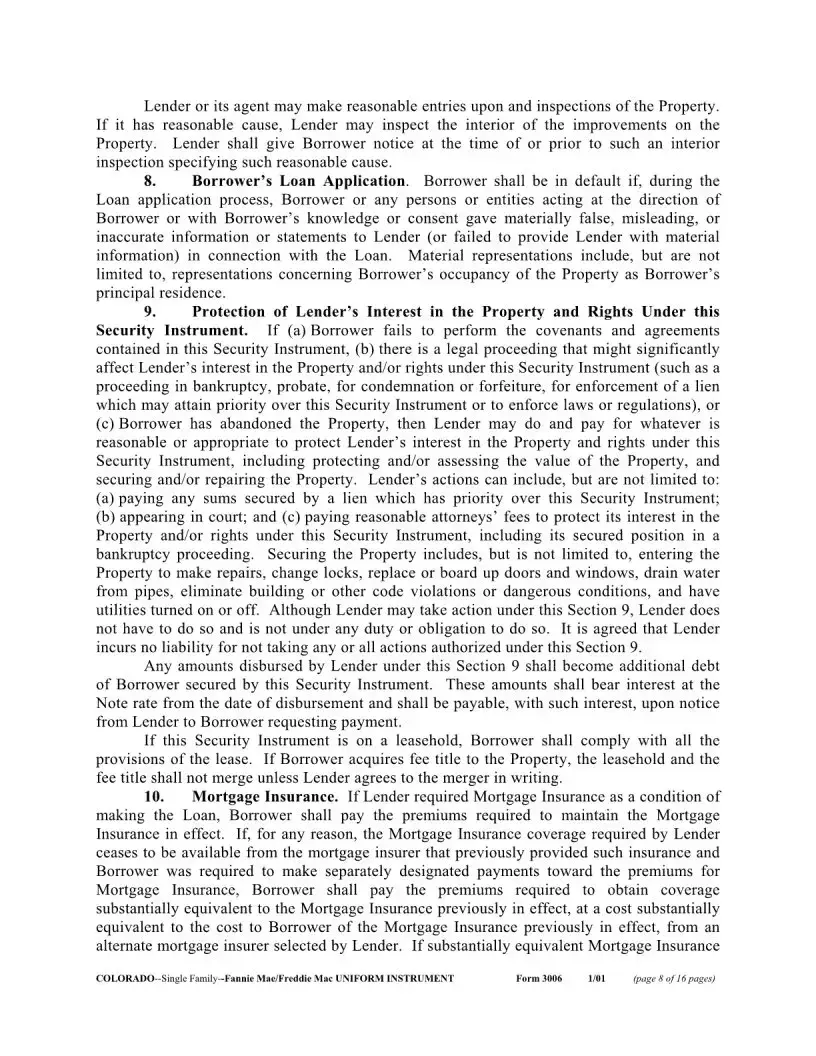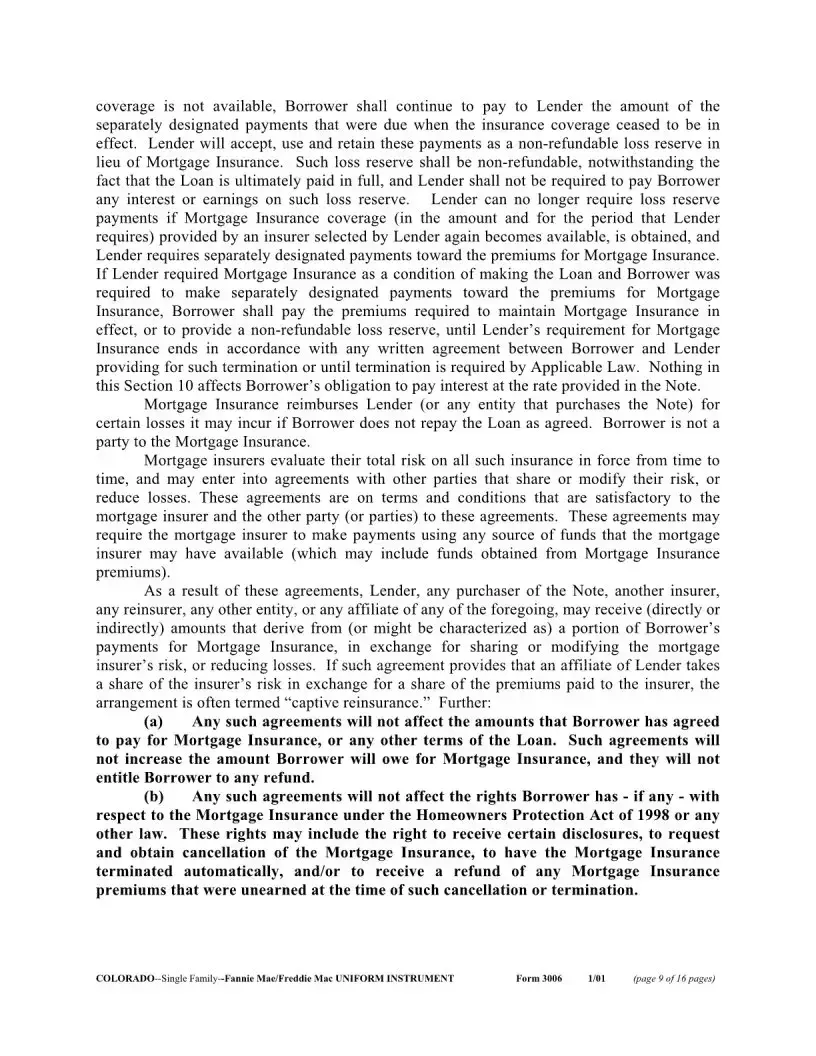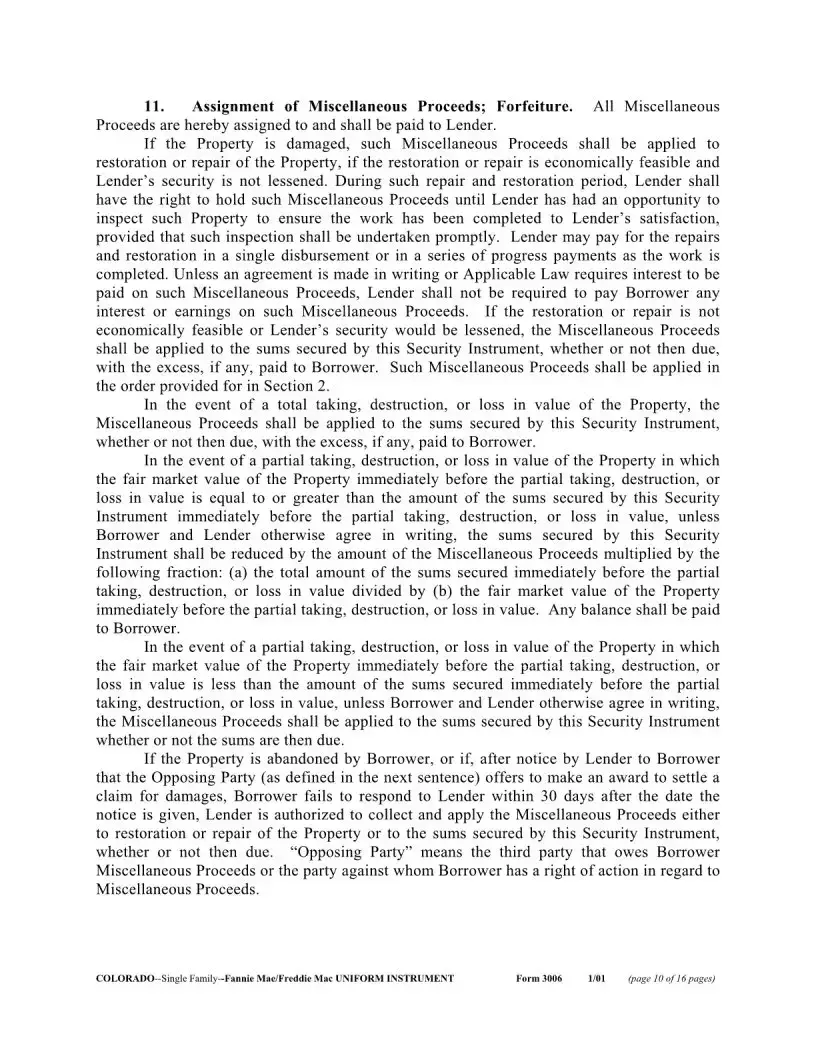What is the Colorado 3006 form?
The Colorado 3006 form is a Deed of Trust document used in real estate transactions. It establishes security for a loan by allowing the lender to take ownership of the property if the borrower defaults on the loan. The document contains specific definitions, terms, and conditions relevant to the transaction, ensuring that both parties understand their obligations.
Who are the key parties involved in the Colorado 3006 form?
The key parties include the Borrower, who is the individual obtaining the loan, and the Lender, who provides the loan. There is also a Trustee, typically the Public Trustee of the jurisdiction, who holds the title to the property in trust until the loan is repaid. The roles of each party are clearly defined to outline their responsibilities.
What type of property does the Colorado 3006 form cover?
This form secures residential properties, including single-family homes and condos. It encompasses all improvements, easements, and fixtures associated with the property. This ensures that any additions or changes to the property are also included under the terms of the agreement.
What happens if a Borrower defaults on their loan?
If the Borrower defaults, the Lender can initiate foreclosure proceedings. The Trustee has the power of sale, allowing them to sell the property to recover the outstanding loan amount. This process is guided by the terms outlined in the Colorado 3006 form and applicable laws.
What are "Riders" in the context of the Colorado 3006 form?
Riders are supplemental agreements attached to the main Deed of Trust document. They may include specific terms related to various aspects of the loan, such as adjustable rates or special provisions for properties like condominiums or second homes. These Riders provide additional clarity and customization to the original agreement.
What are community association dues, fees, and assessments?
Community Association Dues, Fees, and Assessments refer to any additional charges imposed by a homeowners' or condominium association. These charges may be for maintenance of common areas or other community services. The Borrower is responsible for these costs, as stated in the Colorado 3006 form, ensuring that all financial responsibilities are defined.
How are payments processed according to the Colorado 3006 form?
Payments must be made in U.S. currency and are deemed received when they are at the designated location specified by the Lender. The form also outlines specific situations where payments might not be accepted if they don’t sufficiently bring the loan current. This helps in maintaining clarity about payment expectations.
What are the implications of missing a payment?
Missing a payment can lead to late fees and may result in the loan being considered in default. If payments are persistently insufficient, the Lender has the right to initiate foreclosure. The terms within the Colorado 3006 form highlight the seriousness of keeping up with payments and the potential consequences of non-payment.
How does the Colorado 3006 form impact the rights of successors in interest?
In the event that the property is transferred to another party, that successor may inherit certain obligations under the original loan agreement. The Colorado 3006 form defines the rights and responsibilities of any successors, ensuring that the loan terms continue to apply despite changes in ownership.
